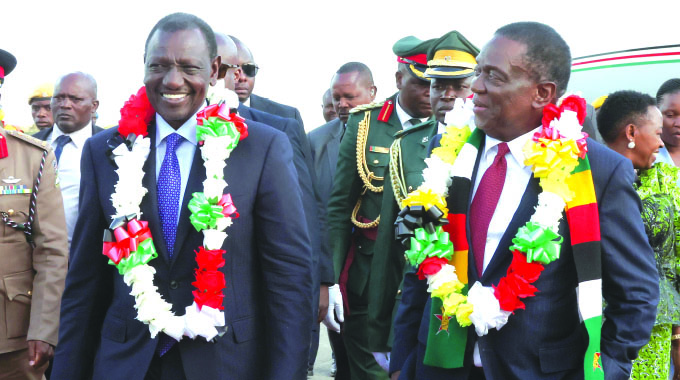Tourism a key pillar in socio-economic development: UNWTO secretary-general

Tawanda Musarurwa in Victoria Falls
THE continued growth of global tourist arrivals necessitates countries to adopt tourism as one of key pillars of socio-economic development, United Nations World Tourism Organisation (UNWTO) secretary-general Mr Taleb Rifai has said. He was speaking during the ongoing UNWTO 20th General Assembly here in Victoria Falls yesterday.
Notably both Zimbabwe and Zambia, which are co-hosting the 20th General Assembly, have placed tourism as one of their four pillars for economic growth.
In Zimbabwe, tourism was identified and subsequently pronounced one of the four pillars of the country’s economic turnaround programmes in early 2009.
“The fact that international tourism grew above expectations confirms that travelling is now part of consumer patterns for an increasing number of people in both emerging and advanced economies” said Mr Rifai.
“This underlines the need to rightly place tourism as one of the key pillars of socio-economic development, being a leading contributor to economic growth, exports and jobs.”
Latest figures from the UNWTO show that global tourist arrivals grew by 5 percent during the first half of this year compared to the same period last year, reaching almost 500 million
That growth was above the projection made at the beginning of the year (+3 percent to +4 percent) and is also exceeding the trend of the UNWTO long-term outlook Tourism Towards 2030 (+3,8 percent a year).
Destinations around the world welcomed an estimated 494 million overnight visitors in the first six months of 2013, according to the Advance Edition of the UNWTO World Tourism Barometer released during the on-going UNWTO 20th General Assembly.
These figures represent an increase of 5 percent or an additional 25 million international tourists compared to the same period of 2012.
Growth was stronger in emerging economy destinations (+6 percent) than in advanced economies (+4 percent), a trend which has marked the sector for many years now.
In a still uneven global economic environment, results were positive in all regions and sub-regions, though the overall picture was mixed. Europe (+5 percent) performed surprisingly stronger than expected, driven by Central and Eastern Europe (+10 percent) and Southern and Mediterranean Europe (+6 percent).
Asia and the Pacific (+6 percent) also exceeded expectations, boosted by South-East Asia (+12 percent) and South Asia (+7 percent).
On the other hand, results were weaker than anticipated in the Americas (+2 percent), as South America and the Caribbean lagged behind.
The first semester normally accounts for some 45 percent of the total arrivals count of the year (the Northern hemisphere high season months of July and August fall into the second semester).
According to Mr Rifai, growth is expected to continue in the second half of 2013 but at a gradually slower pace.
UNWTO forecasts 2013 to end at 4 percent or slightly above, thus exceeding the initial estimate for the year.









Comments